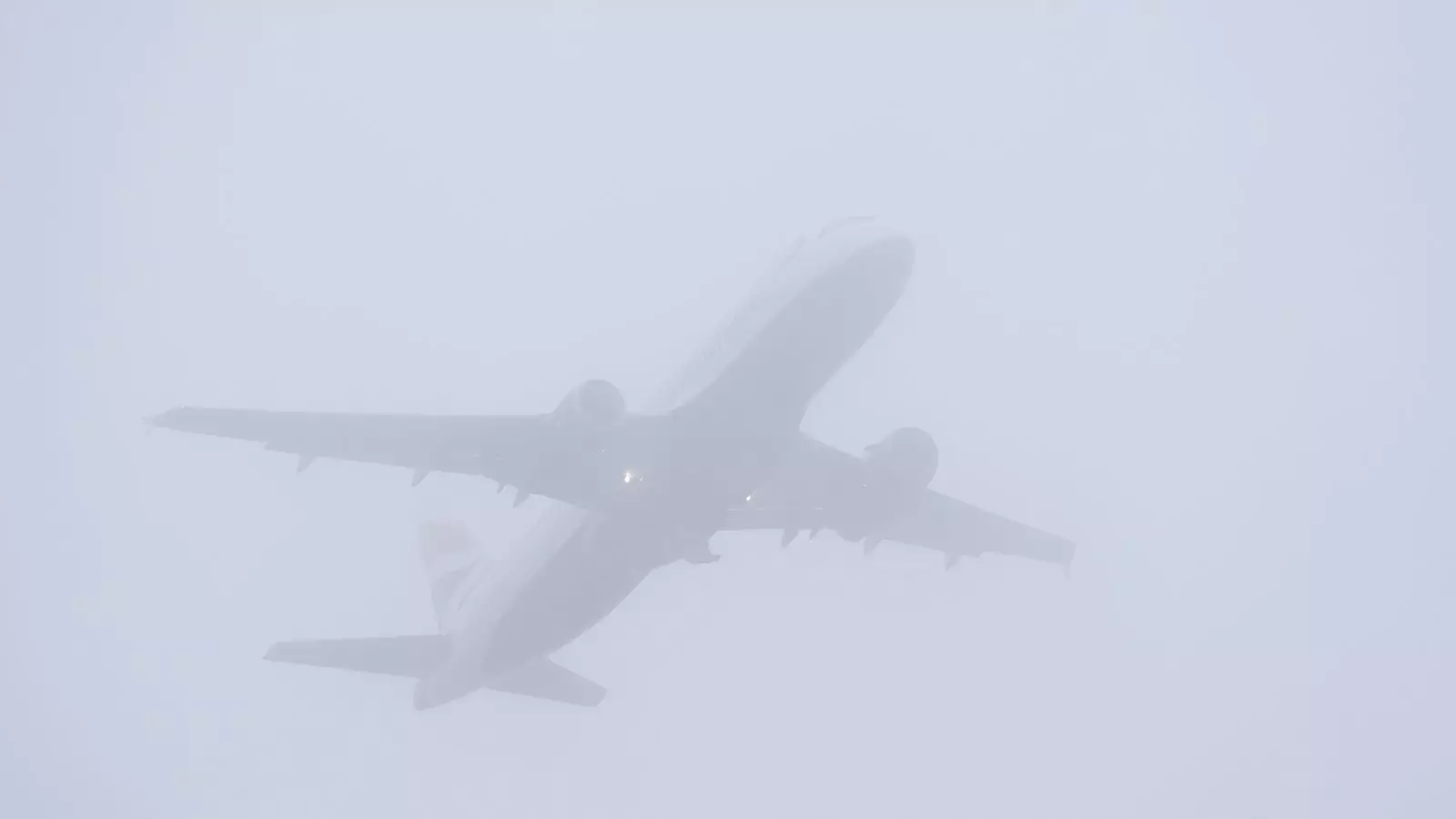As the holiday travel period reaches its peak, thick fog has become a significant hurdle for countless passengers attempting to navigate flights across England. Gatwick Airport, known as one of the busiest in the country, has been severely affected, with the UK’s air traffic control provider, Nats, implementing temporary restrictions due to drastically reduced visibility. This situation on the tarmac not only disrupts flight schedules but also adds an extra layer of anxiety to holiday travel plans. With travelers eager to reach their destinations in time for Christmas festivities, the unforeseen weather developments serve as a stark reminder of the unpredictability that can accompany air travel.
The Metropolitan Office has warned of visibility dropping to dangerously low levels, with some areas experiencing visibility as limited as 100 meters. The consequences of these weather conditions ripple beyond single flights; entire travel plans are in disarray. For example, Kiera Quayle and her husband found themselves stranded on the Isle of Man after their EasyJet flight was canceled due to the weather at Gatwick. This situation highlights how tightly knit personal schedules can unravel when unexpected delays occur. Although they are fortunate to have family accommodations, the emotional toll and logistical challenges posed by such disruptions are significant, affecting both travel morale and familial ties.
Optimistically, weather forecasts suggest an improvement in conditions later on Sunday, providing some hope that disrupted travel could eventually stabilize. However, the potential for upcoming adverse weather, including another round of snow and rain as the New Year approaches, looms large over these resolutions. The Met Office has already issued warnings, foreseeing that severe weather could unleash “significant disruption” ahead of the Hogmanay celebrations. As travelers attempt to resume their holiday journeys, they are left to contend with the implications of unpredictable and severe winter weather.
In addition to flight delays, warnings regarding wind gusts of up to 60mph throughout northern England provide further cause for concern. Travelers need to stay informed and agile, as shifts in weather can necessitate rapid changes to their plans. Moreover, authorities stress the importance of contacting airlines directly to obtain the most accurate and timely information regarding flight statuses. As passengers grapple with adjusting itineraries, taking proactive measures—such as coordinating accommodations and pet care, as illustrated by Kiera Quayle’s experience—can mitigate some of the pressures caused by such travel disruptions.
Ultimately, holiday travel is rife with challenges, with fog and inclement weather serving as mere catalysts for a broader examination of resilience and adaptability. This turbulent period—while frustrating for so many—also presents an opportunity for travelers to recalibrate their expectations and embrace the unpredictability that often accompanies holiday journeys. As individuals work to navigate these hurdles and the weather inevitably shifts, one thing remains clear: the spirit of the season endures, even amidst the chaos of flight disruptions.

